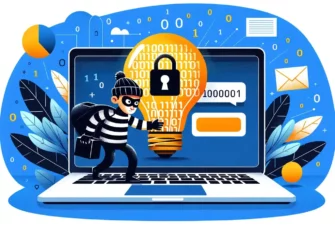
One may wonder why businesses are so vulnerable to online fraud. The answer is twofold. Many merchants don’t secure online payment processing the proper way, but fraudsters also deserve some credit as their schemes become increasingly harder to combat. In this article, we’ll reveal eleven best practices on how to secure online payments and protect customers’ sensitive data.
E-commerce fraud ranges from the classic account takeover to stolen credit cards and the more sophisticated triangulation schemes where scammers act as secret middlemen in online purchases. A holistic approach to fraud detection and prevention keeps your online store away from hackers’ shenanigans. Follow our practices for the best e-commerce payment protection.
How to Secure Online Payment Processing?
What sets apart a reliable online vendor or service from a questionable one is secure online transactions & payments. The insights and strategies below will help you implement robust security measures.
1. Encrypt Customer Payment Data
Your website’s security starts with an SSL (Secure Sockets Layer) certificate. This small digital file uses the TLS (Transport Layer Security) protocol to encrypt data in transit between users’ browsers and web servers. SSL/TLS encryption has been the backbone of e-commerce development since the early days of the Internet, and now it’s mandatory for all websites.
For e-commerce platforms, SSL encryption is part of PCI DDS (Payment Card Industry Data Security Standard) compliance – a universal security standard for organizations that handle cardholder data.
With so many types of SSL certificates available, the best option for most e-commerce sites is a Business Validation (BV) SSL certificate. BV SSL is a high-assurance certificate that validates an official company. The verification process requires paperwork from your side, but you can speed up the process by getting an LEI code for your organization.
2. Collect and Store as Little Data as Possible
The more data you collect from your customers, the greater the risks in case of a breach. Recent legislation, including the General Data Protection Regulation (GDPR), places strict requirements on how data is collected, stored, and accessed.
Don’t collect and store data just because you can, especially when personal data is concerned. Gather the basic information such as the customer’s first and last name, address, or credit card payment details, and store it on secure and encrypted cloud systems.
3. Become PCI Compliant
PCI compliance relies on three critical aspects: credit card data protection, stored data security, and annual validation. If you use a third-party payment processor, a good part of PCI compliance management becomes their responsibility. Nevertheless, it’s essential to know and understand your obligations.
The 12 PCI compliance requirements are summarized below:
- Maintain a firewall to protect cardholder data inside the corporate network
- Protect stored data on both physical and virtual systems
- Do not use default passwords. Change them periodically.
- Use an SSL certificate to encrypt cardholder data in transit across public networks
- Restrict access to cardholder data
- Restrict access to system components
- Restrict physical access to cardholder data
- Track and monitor access to network resourced and cardholder data
- Develop and maintain secure systems and applications
- Scan all systems that store sensitive data for potential vulnerabilities
- Regularly test security systems and processes
- Maintain a standard security policy across your systems and personnel
4. Implement 3D Secure
3D Secure stands for 3 Domain Server – a security protocol that involves three parties that are the key figures in the 3D Secure process:
- The merchant selling the item
- The bank of the company – the acquiring bank
- The issuer of the card – commonly VISA or MasterCard.
3D secure authentication method prevents the unauthorized use of cards. It also protects merchants from chargebacks in the event of fraudulent transactions. With this new technology, misuse of cards and loss of payments is significantly reduced.
5. Require Strong Passwords
Never underestimate the power of a strong password. According to Verizon, compromised credentials are the most common cause of cyber attacks, accounting for 61% of breaches. There’s a reason why websites don’t let users create weak passwords – it’s a disaster waiting to happen.
By lengthening a password by just a few characters, you give hackers trillion additional combinations to break. Here’s how to make a password almost unbreakable:
- Under any circumstances, avoid any personal information
- If the word can be found in a dictionary, don’t use it.
- Include a mix of special characters (numbers, upper case, symbols)
- Use password generators provided by reputable password managers such as Dashline or Lastpass.
6. Use Strong Customer Authentication
Strong Customer Authentication (SCA) adds a layer of security when users log into your system. It protects against uncontrolled software access and is ultra-effective against automated bot attacks (99.9% prevention rate, according to Microsoft). SCA requires users to present at least two possible identity factors from three available: PIN, face/fingerprint scant, or mobile phone.
Another efficient method to validate online transactions is the Card Verification Value (CVV) – the 3-4 digit number on the back of VISA, MasterCard, Discover, and American Express credit cards.
CVV safeguards credit cards against theft, fraud, and unauthorized transactions. It ensures that only the card owner uses the card. Even if someone gets hold of the card number, they cannot transact without the CVV.
7. Use SecureOnline Payment Methods and Providers
Third-party payment processors like Stripe or one-in-all e-commerce platforms like Shopify streamline your business to the point that you don’t have to worry about data storage and security. Best of all, you’re immune to liability and risks associated with online fraud.
Online stores powered by reliable third-party platforms are PCI compliant by default and feature advanced security infrastructure, giving you the peace of mind to focus on growing your business.
8. Use Address Verification Service
An address verification service (AVS) is used in e-commerce payments to enhance security and reduce the risk of fraudulent transactions. AVS verifies the cardholder’s billing address provided during the transaction against the address on file with the card issuer.
AVS helps detect potentially fraudulent activities. It will raise a red flag if a transaction originates from a different country than the billing address on file. Merchants can configure their payment systems to automatically flag or review transactions based on the AVS response codes received.
As with any system, AWS has its limitations. It may not consider variations in address formats or minor discrepancies, such as misspellings or differences in street abbreviations. Additionally, AVS does not verify the cardholder’s identity or the availability of funds in the account.
9. Monitor Fraud 24/7
It’s always better to be proactive rather than reactive, especially when customers’ privacy is at stake. Thankfully, plenty of tools and fraud management systems can protect your business. And, if you add AI to the equation, hackers will be powerless to breach your security. Here’s how you can monitor and prevent fraud:
- Install antivirus software on all the devices connected to your payment terminals. Update your website and software regularly, and use the latest security patches.
- Scan your system for vulnerabilities to detect potential loopholes that cybercriminals may exploit, as their primary aim is to infect payment providers’ servers with malware that scrapes live payment data from users. Vulnerability scanning is required for PCI compliance, so use a PCI Approved Scanning Vendor, commonly known as ASV.
- Let AI and machine learning analyze suspicious activity by tracking customer behavior. Artificial Intelligence is quickly becoming essential to cybersecurity, and it can save your business tons of money long-term.
10. Train Employees
Cybersecurity awareness should be on every online company’s agenda. A culture of security is the best “soft” defense against continuous threats, especially when 36% of all data breaches come from internal actors. To prevent sabotage from rogue employees, restrict system access and compartmentalize security-critical workloads.
Staff should know your security protocols and what to do after a data breach. According to the Advanced Computing Systems Association (USENIX), companies should hold cybersecurity training every four to six months. Their study on phishing awareness found that employees tend to forget what they learned, so by constantly reminding them about the dangers of cybercrime, you protect your business and customers.
11. Regularly Update and Patch Systems
Keeping all software and systems with the latest security patches is crucial for maintaining a secure online payment processing environment. Cybercriminals often exploit vulnerabilities in outdated software to gain unauthorized access or launch attacks.
Several high-profile security breaches have occurred due to unpatched systems. For instance, the Equifax breach in 2017, which exposed the sensitive personal information of millions of individuals, was a result of the company’s failure to patch a known vulnerability. Similarly, the 2017 WannaCry ransomware targeted unpatched systems, causing significant disruption and financial losses.
Security experts consistently emphasize the significance of patch management. Best practices, such as those outlined by the Center for Internet Security (CIS), stress the need for a proactive approach to patching, including establishing regular patch cycles, leveraging automated patch management tools, and conducting vulnerability assessments to identify and address weaknesses.
Final Thoughts
E-commerce is becoming the default shopping option in our digital world. But with the convenience of buying items from the comfort of your home come the risks of fraud. It’s every business’s responsibility to protect shoppers’ sensitive data and promote cybersecurity awareness in the workplace. We’ve shown you how to ensure online payment security, now is your turn to be proactive and safeguard your online business from financial and reputational losses.
Save 10% on SSL Certificates when ordering today!
Fast issuance, strong encryption, 99.99% browser trust, dedicated support, and 25-day money-back guarantee. Coupon code: SAVE10



























